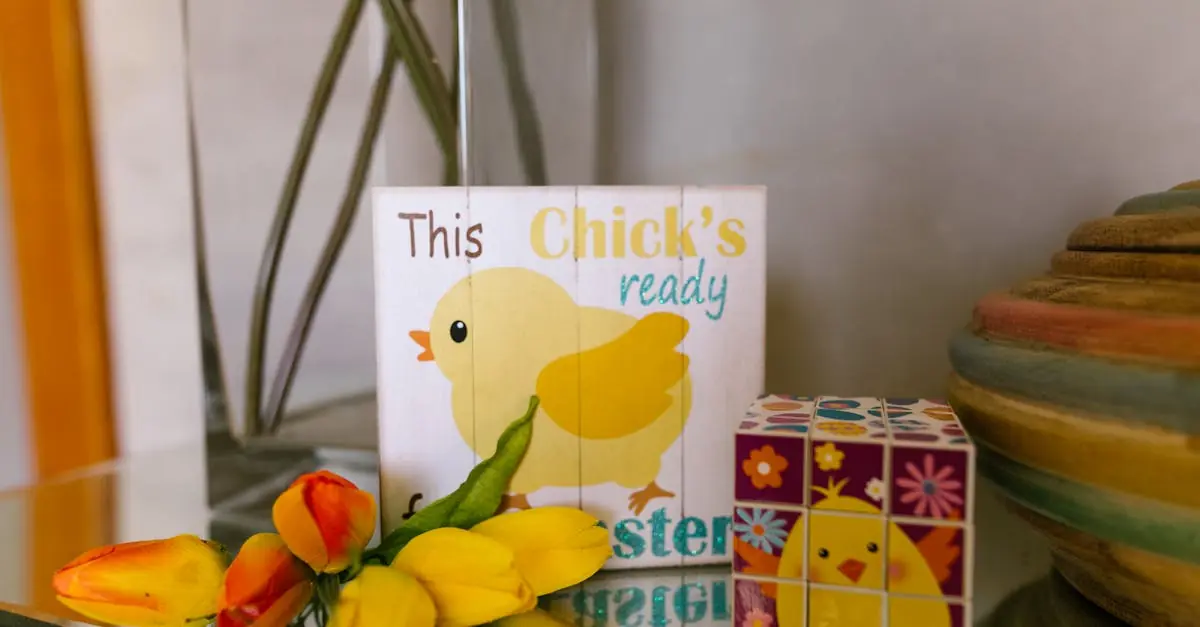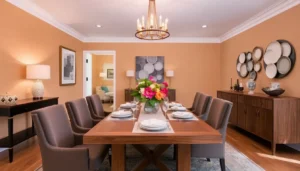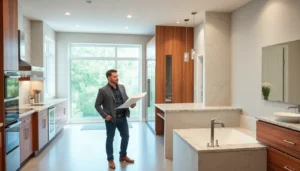Step into a time machine and travel back to the groovy 1970s, where living rooms were a riot of color and creativity. Imagine bold patterns, funky furniture, and a vibe that screamed, “Let’s get this party started!” The 70s were all about self-expression, and that’s exactly what makes this era’s interior design so captivating.
Table of Contents
ToggleOverview of Living Room 70s Interior Design
Living room design in the 1970s featured bold colors, eclectic patterns, and innovative furniture choices. Earthy tones like burnt orange, avocado green, and mustard yellow dominated the palette. These colors created a warm, inviting atmosphere that encouraged comfort and relaxation. Additionally, large-scale floral and geometric prints adorned fabrics, contributing to the vibrant aesthetic.
Funky furnishings defined the decade. Bean bag chairs, modular sofas, and low coffee tables became popular choices. These pieces emphasized flexibility, allowing for easy rearrangement to suit various activities. Unique materials also made their mark, with acrylic, chrome, and plywood commonly used in furniture design.
Wood paneling gained popularity as well. This design choice added texture and warmth to living rooms. While traditional finishes remained, many opted for dark wood to enhance the era’s grounded feel. In contrast, open layouts fostered a sense of flow and connection between spaces.
Lighting played a crucial role in 70s living rooms. Decorative floor lamps and pendant lights often featured unique, sculptural designs. These fixtures complemented the playful atmosphere, adding personality to each space. Wall art, such as macrame hangings and abstract prints, provided additional visual interest.
The 1970s interior design movement celebrated self-expression. It encouraged individuals to create spaces reflecting their personal style. Embracing this philosophy led to diverse and memorable living room aesthetics that remain influential today.
Key Features of 70s Design
The 1970s design style showcases vibrant elements through its defining characteristics. Notably, the color palettes stand out for their boldness and warmth.
Color Palettes
Earthy tones dominate the 70s color schemes. Burnt orange, avocado green, and mustard yellow create inviting atmospheres. Complementary colors often included deep browns and soft creams, enhancing the overall warmth. Large-scale prints featuring flowers and abstract patterns added vibrancy, reflecting the playful spirit of the decade. Accents of bright hues appeared in accessories, providing visual interest. These energetic combinations foster lively environments, making living rooms an expression of personality.
Furniture Styles
Funky furniture styles typify the 70s aesthetic. Low-profile sofas, often modular, emphasized comfort and sociability. Bean bag chairs provided casual seating options, embracing relaxation. Unique materials like acrylic and plywood introduced an innovative touch. Coffee tables took on various shapes, including round and asymmetrical, contributing to the playful vibe. Additionally, oversized furniture pieces created bold statements while maintaining practicality. This eclectic mix of styles encouraged homeowners to showcase creativity in their living spaces.
Popular Materials and Textures
Materials and textures defined the character of 1970s living room design, showcasing an adventurous spirit that embraced both nature and innovation.
Wood and Rattan
Wood played a crucial role in 1970s interiors, adding warmth and a natural feel to spaces. Popular selections included oak, teak, and walnut, each with unique grain patterns contributing to the aesthetic. Rattan emerged as a favored material for furniture, offering a lightweight yet sturdy option. It often appeared in lounge chairs, end tables, and room dividers, enhancing the casual vibe. Incorporating wood beams and paneling on walls established a rustic charm, creating a cozy environment. The authenticity of these materials resonated with the era’s push for environmentally conscious design.
Fabrics and Patterns
Fabrics in the 1970s showcased bold prints and textures that echoed the decade’s vibrant personality. Upholstery often included polyester, velvet, and corduroy, offering both durability and comfort. Iconic patterns featured large florals, geometric shapes, and psychedelic designs that created eye-catching focal points. Striped and patterned textiles also adorned pillows and drapes, amplifying color interactions. Earthy tones peppered these fabrics, harmonizing with the overall palette of burnt oranges and deep greens. Mixing various textures and patterns achieved a layered look, reflecting the playful experimentation that marked the era.
Iconic Décor Elements
The 1970s brought forth an unmistakable design aesthetic in living rooms, showcasing a vibrant mix of colors and textures. Key elements defined this era’s unique style.
Lighting Fixtures
Lighting fixtures played a crucial role in defining the 1970s ambiance. Pendant lights with geometric shapes often hung from the ceiling, capturing the eye and enhancing the room’s character. Table lamps frequently featured bold colors and funky designs, adding to the playful atmosphere. Floor lamps usually showcased sculptural forms, making them functional art pieces. Alternating between bright and warm lighting created an inviting space perfect for relaxation and socializing.
Wall Art and Accessories
Wall art and accessories exuded personality in 1970s living rooms. Large-scale prints, often portraying abstract designs or nature scenes, dominated the walls. Tapestries and macramé wall hangings added texture and warmth, inviting a more bohemian feel. Accessories like funky vases and ceramic sculptures complemented the overall decor, making bold statements. Adding lush indoor plants breathed life into the space, connecting the indoors with nature, a significant theme of the 1970s design ethos.
The living room design of the 1970s remains a vibrant testament to an era defined by creativity and individuality. Its bold color palettes and eclectic furnishings invite a sense of warmth and comfort that feels timeless. This unique style encourages a playful approach to interior design, where self-expression takes center stage.
As modern trends continue to evolve, the influence of 70s aesthetics can still be seen in contemporary spaces. Embracing elements like earthy tones, layered textures, and statement lighting can breathe new life into any living room. Ultimately, the spirit of the 1970s serves as a reminder that home is a canvas for personal expression and creativity.




